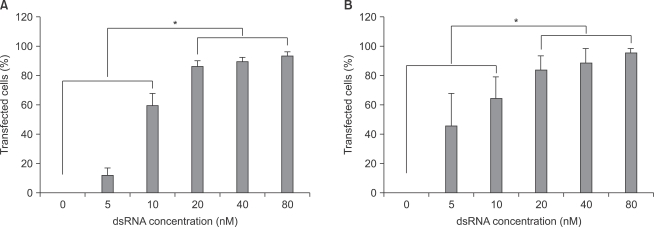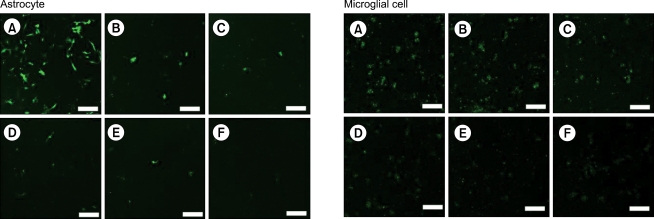1. Sharp PA. RNA interference--2001. Genes Dev 2001; 15: 485-490. PMID:
11238371.


2. Hammond SM, Caudy AA, Hannon GJ. Post-transcriptional gene silencing by double-stranded RNA. Nat Rev Genet 2001; 2: 110-119. PMID:
11253050.



3. Tuschl T. RNA interference and small interfering RNAs. Chembiochem 2001; 2: 239-245. PMID:
11828450.


4. DeLeo JA, Yezierski RP. The role of neuroinflammation and neuroimmune activation in persistent pain. Pain 2001; 90: 1-6. PMID:
11166964.


5. Milligan ED, O'Connor KA, Nguyen KT, Armstrong CB, Twining C, Gaykema RP, et al. Intrathecal HIV-1 envelope glycoprotein gp120 induces enhanced pain states mediated by spinal cord proinflammatory cytokines. J Neurosci 2001; 21: 2808-2819. PMID:
11306633.



6. Raghavendra V, Rutkowski MD, DeLeo JA. The role of spinal neuroimmune activation in morphine tolerance/hyperalgesia in neuropathic and sham-operated rats. J Neurosci 2002; 22: 9980-9989. PMID:
12427855.



7. Watkins LR, Milligan ED, Maier SF. Spinal cord glia: new players in pain. Pain 2001; 93: 201-205. PMID:
11514078.


8. Makimura H, Mizuno TM, Mastaitis JW, Agami R, Mobbs CV. Reducing hypothalamic AGRP by RNA interference increases metabolic rate and decreases body weight without influencing food intake. BMC Neurosci 2002; 3: 18PMID:
12423556.



9. Jackson AL, Burchard J, Schelter J, Chau BN, Cleary M, Lim L, et al. Widespread siRNA "off-target" transcript silencing mediated by seed region sequence complementarity. RNA 2006; 12: 1179-1187. PMID:
16682560.



10. Birmingham A, Anderson EM, Reynolds A, Ilsley-Tyree D, Leake D, Fedorov Y, et al. 3' UTR seed matches, but not overall identity, are associated with RNAi off-targets. Nat Methods 2006; 3: 199-204. PMID:
16489337.


11. Semizarov D, Frost L, Sarthy A, Kroeger P, Halbert DN, Fesik SW. Specificity of short interfering RNA determined through gene expression signatures. Proc Natl Acad Sci U S A 2003; 100: 6347-6352. PMID:
12746500.



12. Sledz CA, Holko M, de Veer MJ, Silverman RH, Williams BR. Activation of the interferon system by short-interfering RNAs. Nat Cell Biol 2003; 5: 834-839. PMID:
12942087.



13. S├Ėrensen DR, Leirdal M, Sioud M. Gene silencing by systemic delivery of synthetic siRNAs in adult mice. J Mol Biol 2003; 327: 761-766. PMID:
12654261.


14. National Research Council. Guide for the care and use of laboratory animals. 1996, Washington, D.C., National Academy Press.
15. Noble M, Mayer-Proschel M. Edited by Banker G, Goslin KCulture of astrocytes, oligodendrocytes, and O-2A progenitor cells. Culturing Nerve Cells. 1998, 2nd ed. : Cambridge, The MIT Press. pp 499-543.

16. Shibakawa YS, Sasaki Y, Goshima Y, Echigo N, Kamiya Y, Kurahashi K, et al. Effects of ketamine and propofol on inflammatory responses of primary glial cell cultures stimulated with lipopolysaccharide. Br J Anaesth 2005; 95: 803-810. PMID:
16227338.



17. Semple-Rowland SL, Mahatme A, Popovich PG, Green DA, Hassler G Jr, Stokes BT, et al. Analysis of TGF-beta 1 gene expression in contused rat spinal cord using quantitative RT-PCR. J Neurotrauma 1995; 12: 1003-1014. PMID:
8742129.


18. Ying HS, Gottron FJ, Choi DW. Assessment of cell viability in primary neuronal cultures. Curr Protoc Neurosci 2001; Chapter 7: Unit7.18PMID:
18428528.


19. Ohya K, Handa Y, Ogawa M, Suzuki M, Sasakawa C. IpgB1 is a novel Shigella effector protein involved in bacterial invasion of host cells. Its activity to promote membrane ruffling via Rac1 and Cdc42 activation. J Biol Chem 2005; 280: 24022-24034. PMID:
15849186.


20. Hough SR, Clements I, Welch PJ, Wiederholt KA. Differentiation of mouse embryonic stem cells after RNA interference-mediated silencing of OCT4 and Nanog. Stem Cells 2006; 24: 1467-1475. PMID:
16456133.


21. Tschuch C, Schulz A, Pscherer A, Werft W, Benner A, Hotz-Wagenblatt A, et al. Off-target effects of siRNA specific for GFP. BMC Mol Biol 2008; 9: 60PMID:
18577207.



22. Jackson AL, Bartz SR, Schelter J, Kobayashi SV, Burchard J, Mao M, et al. Expression profiling reveals off-target gene regulation by RNAi. Nat Biotechnol 2003; 21: 635-637. PMID:
12754523.



23. Scacheri PC, Rozenblatt-Rosen O, Caplen NJ, Wolfsberg TG, Umayam L, Lee JC, et al. Short interfering RNAs can induce unexpected and divergent changes in the levels of untargeted proteins in mammalian cells. Proc Natl Acad Sci U S A 2004; 101: 1892-1897. PMID:
14769924.



25. Mosmann T. Rapid colorimetric assay for cellular growth and survival: application to proliferation and cytotoxicity assays. J Immunol Methods 1983; 65: 55-63. PMID:
6606682.


26. Sarret P, Dor├®-Savard L, Beaudet N. Direct application of siRNA for in vivo pain research. Methods Mol Biol 2010; 623: 383-395. PMID:
20217565.


27. Luo MC, Zhang DQ, Ma SW, Huang YY, Shuster SJ, Porreca F, et al. An efficient intrathecal delivery of small interfering RNA to the spinal cord and peripheral neurons. Mol Pain 2005; 1: 29PMID:
16191203.




















